Moon Monday #187: Exploring lava tubes, and more Artemis woes
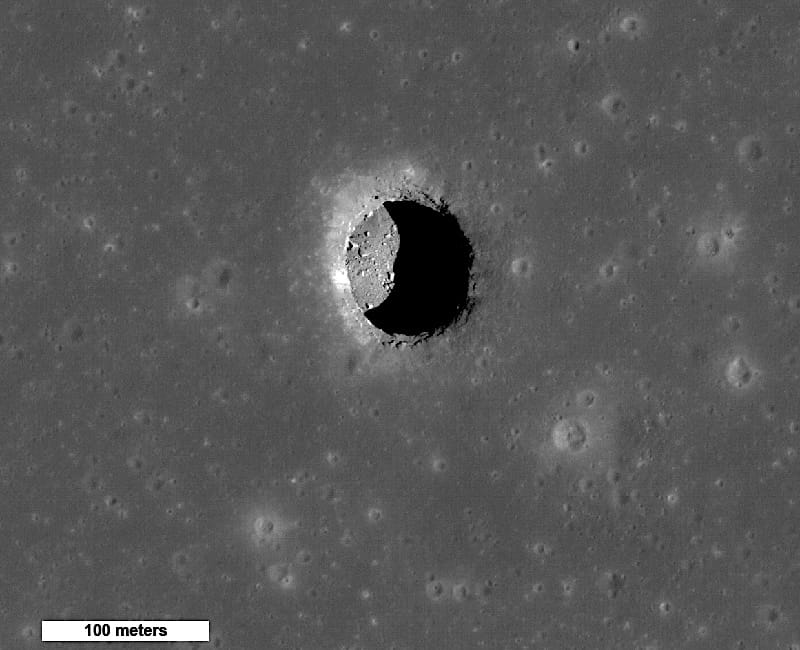
Radar data from NASA’s Lunar Reconnaissance Orbiter (LRO) has helped scientists confirm that the lunar pit of Mare Tranquillitatis indeed does lead into a wide lava tube/cave for at least 80 meters. These results corroborate what scientists long suspected about many lunar pits leading to underground passages based on orbital imagery under different lighting conditions from JAXA’s SELENE spacecraft followed by LRO. SELENE had also bounced radars from some pits and gotten multiple echos, potentially hinting at large lava tubes with enough volume to host entire towns inside.
The lure of lava tubes
Another recent LRO finding suggested that insides of these lava tubes could maintain stable and comfortable temperatures unlike the rest of Luna. One particular pit floor area measured a pleasant 17°C with <1°C variation across the lunar day. Coupled with the fact that such lunar caves provide sheltering from micrometeorite bombardment as well as radiation, they might make for great places to base future crewed habitats in. Many underground lava tubes have convenient openings, or “skylights”, on the surface which robots and humans could enter and exit from.
Lunar lava tubes are thought to have formed similar to those on Earth, that is, when volcanic lava flows cease, their surface can harden while the lava within drains to leave behind an underground tunnel. Openings to such lava tubes form if a surface area collapses due to hot flows underneath or if lava flows breach the surface. As such, lava tubes are also pristine places to study the Moon’s volcanic past and analyze rock samples untouched for well over a billion years.
Exploration plans

Before lava tubes can be directly explored by robots or humans, it would be necessary to map the outer and inner structures of their lunar pit openings in high resolution. Late last year ESA released a call for proposals for small Moon missions under €50 million to fly before end of decade to meet some of the agency’s exploration and science goals. Evan Gough had reported one proposal being that of a small lunar leaper bot that will jump around and map lunar lava tubes. ESA was previously considering a 2033 mission to explore a lunar pit leading into a lava tube but with no updates in over a year, the project seems to be on a halt. There’s also a cool NASA mission concept called Moon Diver, which aims to have a rugged axle rover go down a lunar pit and chemically map its wall, which will help scientists not only figure out future, advanced exploration of lava tubes but also better understand the nature of past volcanism on the Moon and what the structure of the lunar crust is like.
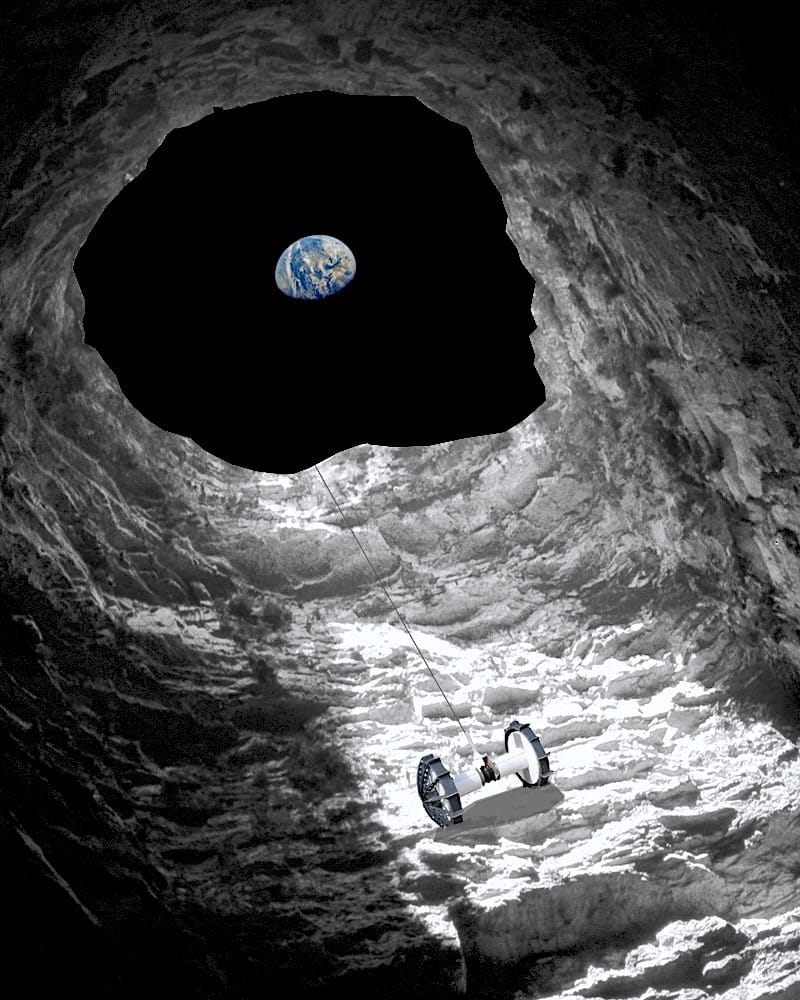
China is also considering exploring lava tubes with robots first followed by studies evaluating human habitats. Recall that CNSA has been sending ground penetrating radars on many of its Chang’e Moon missions. For example, the Yutu 2 rover from Chang’e 4 has a ground penetrating radar with a probing depth of up to 30 meters. Over the last five years, it has been uncovering the recent history of its landed region in the 180-kilometer-diameter Von Kármán crater on the Moon’s farside. Among other things, the radar has detected evidence of a buried crater underground and also a thick, ancient regolith layer sandwiched between two now-solidified lava flows. Sending a rover like Yutu 2 to map the structure of a lunar pit and its underground lava tube section from outside while on the surface will help plan direct robotic and crewed exploration of these cave conduits in the future.
On the crewed exploration end, ESA’s Pangaea campaign to train future lunar astronauts in geology—a highly valuable skill when exploring the Moon and collecting samples—includes astronauts visiting a 8-kilometer long lava tube called La Corona at the Spanish Canary Islands northwest of Africa. While La Corona is one of Earth’s largest lava tubes, it pales in comparison to those on the Moon where lower gravity and lack of intense erosion mechanisms can make for much longer and wider tunnels, potentially up by three orders of magnitude!
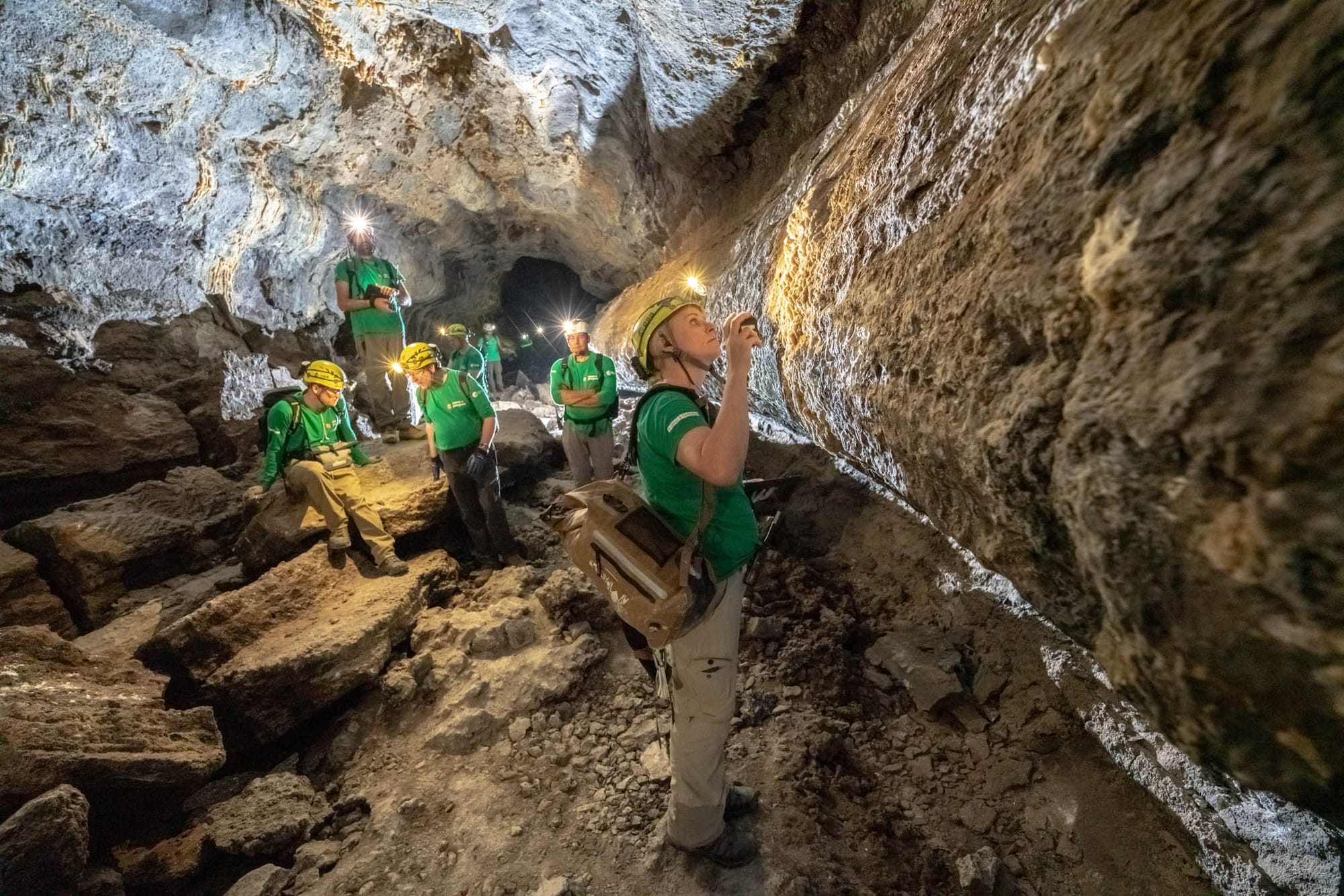
Oh, well..
Now if lunar lava tubes are nice shelters for future astronauts, and if permanently shadowed regions on the Moon’s poles are water-rich to serve future habitats, why not consider exploring shadowed near-polar lunar pits as the ideal “best of both worlds” lunar homes? That’s the question scientists explored in a 2022 study by modeling thermal environments of near-polar lunar pits.
They found that even floors of high-latitude lunar pits don’t get cold enough to trap and accumulate water ice and other volatile resources the way permanently shadowed regions on the lunar poles do. This means future habitats will still need to fetch such resources from polar regions. However, the low, stable temperatures of polar or near-polar lunar pits should slow down escape of volatiles, thus making them good homes to launch resource fetching campaigns from—if we find them.
Artemis cannot catch a break
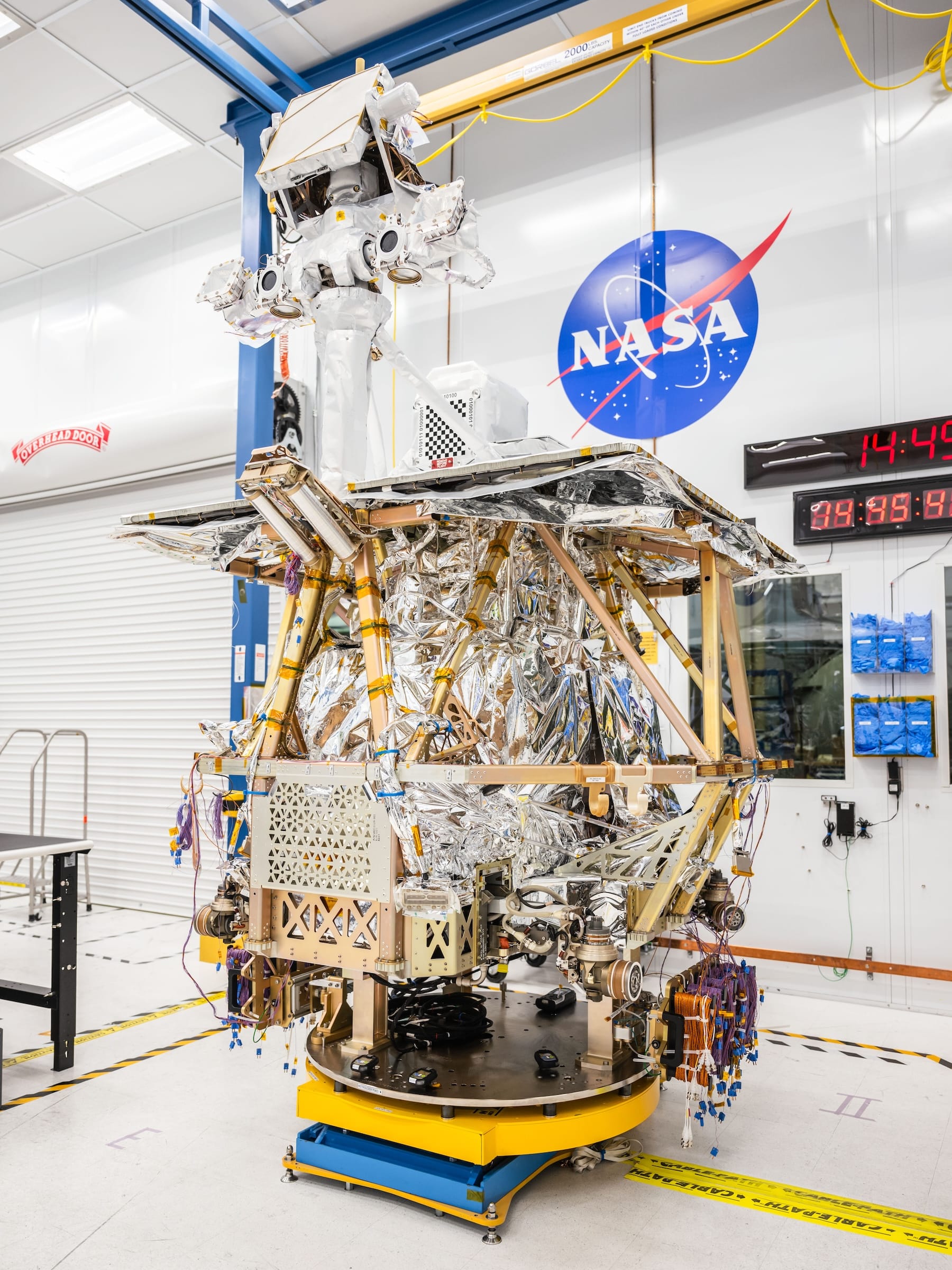
The VIPER rover’s woes continue in the aftermath of NASA’s July 17 announcement to cancel the mission, which was supposed to uniquely explore water ice on the Moon’s south pole. Jack Kiraly reports that the US Senate’s NASA funding proposal for FY2025 does not include an explicit mention of VIPER or any funding increase necessary to sustain the project. This is even worse than last month’s situation, wherein the draft NASA budget from the US House of Representatives—the lower house in the US Congress—had proposed up to $75 million extra in funding for lunar science. As Michael Greshko had noted then, this could’ve potentially allowed NASA to allocate needed funding to VIPER albeit at the cost of some other mission or program since the overall budget remains flat. Now even that doesn’t seem like an option.
In the meanwhile, former NASA associate administrator for science and CLPS’ co-brainchild Thomas Zurbuchen has weighed in on the problem. He says in an interview with Nadia Drake that NASA losing VIPER “pulls the scientific teeth from the Artemis program in an irreversible way.”
So what worries me is that with this cancellation, science in Artemis is reduced to mostly opportunistic investigations. It’s no longer a program that actually drives toward deeper scientific understanding so that when everything is said and done, you have a much better understanding of the Moon itself, or the timing of the outer planets’ migration, which has a lot to do with how we ended up in a stable solar system. The history book for all of that is written on the Moon. It's not on Earth. Right? And it's not on Mars.
Many thanks to Off Planet Research and Arun Raghavan for sponsoring this week’s Moon Monday. If you love this curated community resource too, join them and support independent writing and journalism.

Another element of Artemis facing immediate problems is the NASA-led Gateway lunar orbital habitat. A new report from the US Government Accountability Office (GAO) says the first two (mated) Gateway modules will launch as late as December 2027 instead of September 2025, confirming Philip Sloss’ May 2024 reporting.
The GAO revealed a major issue that a core network chip defect could result in flight hardware within the Gateway to lose communications. Separately, the GAO finds that the Gateway’s HALO habitat module for hosting crew and the PPE propulsion module it will be attached to pre-launch combined weigh 1312 kilograms more than expected for their SpaceX Falcon Heavy launch. Marcia Smith reports that NASA will look into resolving this issue with a program review next month. Recall that as Jeff Foust previously reported, NASA’s decision to launch the two Gateway modules together resulted in habitat module contractor and module-integrator Northrop Grumman taking a $100 million loss out of a $935 million fixed-price contract. The baseline cost estimate for the Gateway itself is $5.3 billion.
As an update on Gateway’s progress otherwise, its HALO habitat module went through a series of structural stress tests in April. Its components and subsystems will be outfitted later this year. The PPE module’s structure is also ready for installation of its propulsion system components, starting with the tanks. Electric field testing for Gateway’s communications antennas are also progressing.
Also see: A gist of Gateway science
More Moon
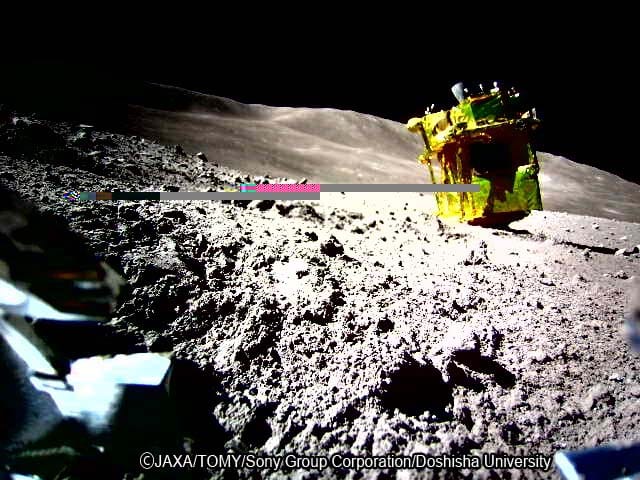
- Despite the nearly upside down orientation of JAXA’s SLIM lander on the Moon, NASA and JAXA worked together to have LRO successfully laser-ping NASA’s small retroreflector onboard SLIM on May 2 from a ~70-kilometer orbital altitude. Combined with similar ongoing pings to NASA’s retroreflector on ISRO’s Chandrayaan 3 lander, these unique demonstrations are a stepping stone towards a future where Mooncraft with purpose-built lasers can locate such targets and land near them as they arrive. For example, this technique will be relevant for repeated cargo deliveries near future habitats.
- The latest update to the excellent LROC Quickmap web app adds a wealth of spacecraft imagery and datasets specifically related to the Moon’s poles while also touting shadow and traverse modes that help visualize in 3D the challenging lighting conditions there for exploration. I’ve
wastedspent more time exploring our Moon on LROC Quickmap than I’d care to admit to my past employer, and this update isn’t helping all the more because I’m my current employer. 🌝 - Studying precise compositions of ten Apollo lunar samples has revealed that the primary mechanism replenishing the Moon’s thin atmosphere over long periods of time seems to be elements released by micrometeorite bombardment rather than from the smashing solar wind.
- There’s another video based on my Moon Monday blog+newsletter: India’s increasingly complex upcoming Chandrayaan Moon missions
